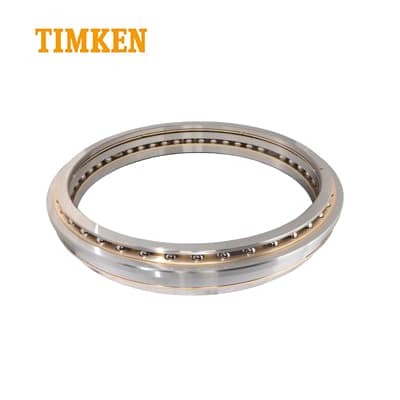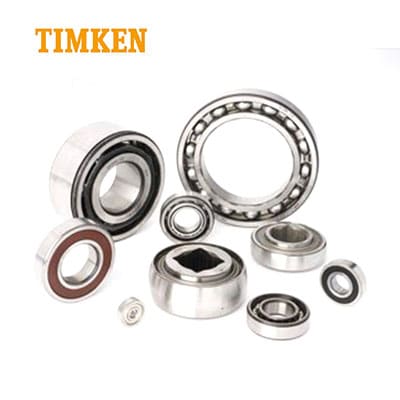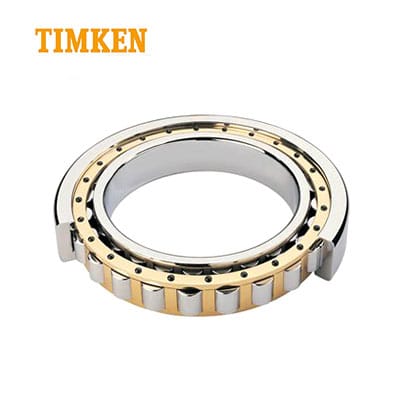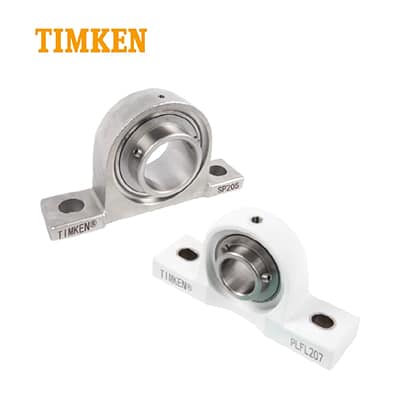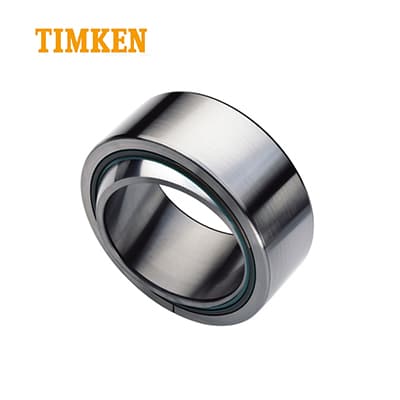Angular Contact Ball Bearings can bear radial load and axial load at the same time. Can work at higher speeds. The larger the contact angle, the higher the axial load carrying capacity. The contact angle is the angle between the line connecting the contact points of the ball and the raceway in the radial plane and a line perpendicular to the bearing axis. High-precision and high-speed bearings usually take a contact angle of 15 degrees. Under the action of axial force, the contact angle will increase.
Single row angular contact ball bearings can only bear axial load in one direction, and will cause additional axial force when bearing radial load. And it can only limit the axial displacement of the shaft or housing in one direction. Angular contact ball bearings have a contact angle of 40 degrees, so they can withstand large axial loads. Angular contact ball bearings are a non-separable design, and the shoulders on both sides of the inner and outer rings are of different heights. In order to increase the load capacity of the bearing, the shoulder on one side is machined lower, so that the bearing can accommodate more steel balls.
Double-row angular contact ball bearings can withstand large radial loads, mainly combined radial and axial loads and moment loads, and limit the axial displacement of the shaft in both directions. The inclination between the inner and outer rings of double row angular contact ball bearings is limited, and the allowable inclination angle depends on the internal clearance of the bearing, the size of the bearing, the internal design and the acting on the bearing. The force and moment on the bearing, and the maximum allowable inclination angle should ensure that excessive additional stress will not be generated in the bearing. If there is an inclination angle between the inner and outer rings of the bearing, it will affect the life of the bearing, and at the same time cause the bearing’s running accuracy to decrease and the running noise to increase. Double row angular contact ball bearings generally use nylon cage or brass solid cage. When installing double row angular contact ball bearings, care should be taken that although the bearings can bear bidirectional axial loads, if there is a ball filling gap on one side, care should be taken not to let the main axial load pass through the groove on the side with the gap. When using the bearing, care should be taken to make the raceway on the side without the ball filling gap bear the main load.
Pairs of double ball bearings
If it is installed in pairs, make the outer rings of a pair of bearings face each other, that is, the wide end faces the wide end face, and the narrow end faces the narrow end face. This avoids causing additional axial forces and limits the shaft or housing to axial play in both directions.
Because the raceways of the inner and outer rings can have relative displacements on the horizontal axis, they can simultaneously bear radial loads and axial loads—combined loads (single row angular contact ball bearings can only bear axial loads in one direction, so they are generally used installed in pairs).
The material of the cage includes brass, synthetic resin, etc., which are distinguished according to the bearing type and service conditions.
Angular contact ball bearings are mostly manufactured by foreign bearing manufacturers, and most of them are used in imported equipment in China, such as angular contact ball bearings 3204RS, etc.
The narrow side is on the outside, the wide side is on the inside, the other wide side is on the inside, and the narrow side is on the outside, which is back-to-back contact.



